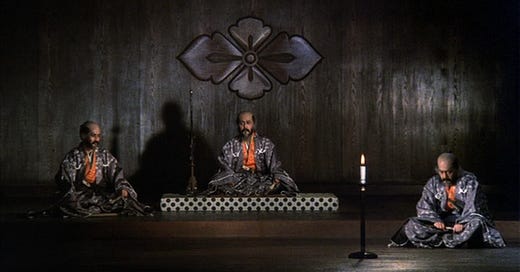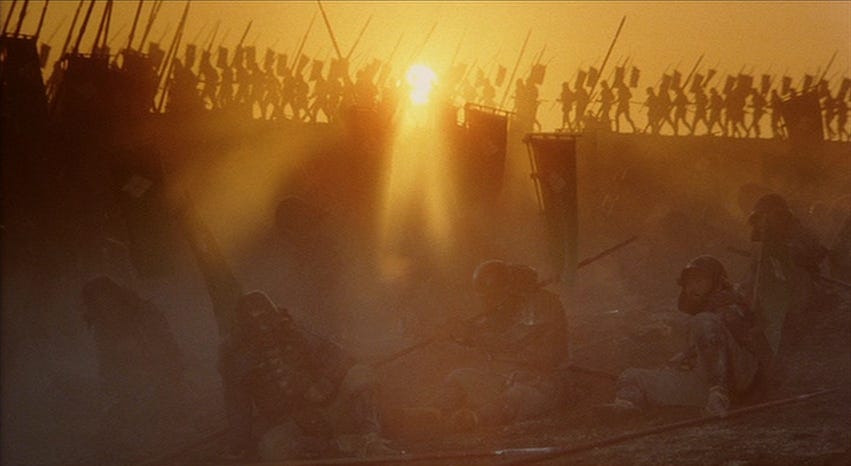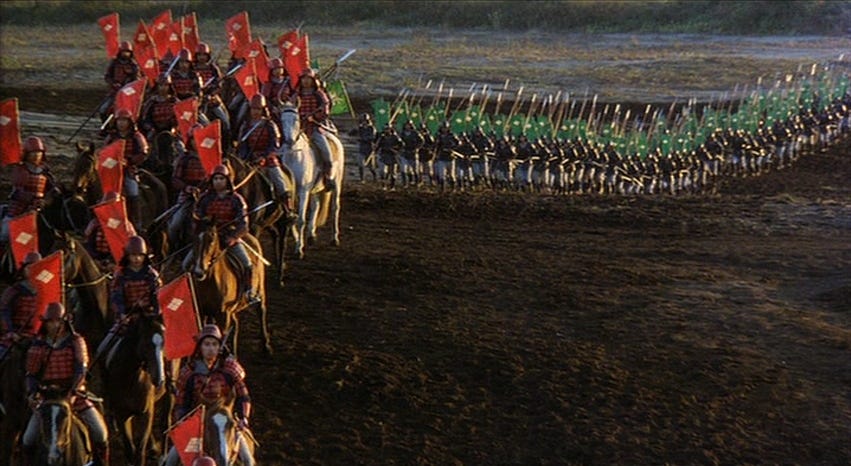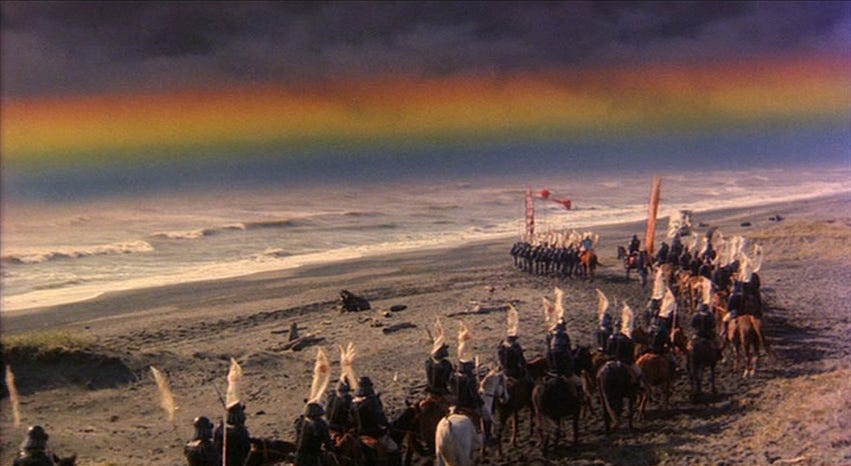Looking for a reminder of the (weird) reality behind the (weird) acronym? Here you go.
First, the Honorable Mentions…
HM #1: The Ninth Configuration
William Peter Blatty is (and will always, I suspect, remain) most famous for writing The Exorcist. But I think perhaps he should be most remembered for writing and directing this insane film. Based on Blatty’s 1978 rewrite of his 1966 novel, Twinkle, Twinkle, “Killer” Kane, it’s a tough film to easily categorize (or to easily summarize), which probably helps to explain why it’s become a bit of a cult classic. With “a tone [that] vacillates between serious metaphysical angst and wild anarchic comedy,” it was also Blatty’s directorial debut. Critic Mark Kermode calls it “a work of matchless madness” and “one of the most genuinely bizarre offerings of modern American cinema.” Kermode has long been its most ardent advocate, proclaiming it “a breathtaking cocktail of philosophy, eye-popping visuals, jaw-dropping pretentiousness, rib-tickling humor and heart-stopping action. “ Perhaps most accurately, “Blatty directs like a man with no understanding of, or interest in, mainstream movie-making. The result is a work of matchless madness.”
HM #2: The Empire Strikes Back
This is not the only Star Wars film that will appear on this list, but definitely the first. I was three(ish) when it came out. Which means that I did not see it in theaters. How old do you people think I am, anyway? I wish I had seen it then, though, because people talk about their theatrical experiences with the original Star Wars trilogy with such affectionate nostalgia and I love being affectionate and nostalgic about movies. (I see and remember you, Old Yeller, and still get misty-eyed thinking about you. …though I suppose that might just be the trauma talking.) The plot twist is legendary, of course, and the Hoth world-building (and attack) is some of the most imaginative stuff in the entire trilogy…ies. I love the Han-Leah relationship here, as well. High point in nearly every way (which is why it dodges the “Middle Film Curse” so effectively.)
That’s enough HM’s—for this year, at least. Now, on to the main event.
1980’s Selection: Kagemusha, by Akira Kurosawa
This film is sometimes described as “a dress rehearsal for Ran.” But that’s wrong, because it’s better than Ran.
There, I said it.
Yes, yes, I know. No less an authority then Kurosawa himself spoke of it thusly, most memorably in the press kit for Ran: “He now regards Kagemusha as a sort of ‘dress rehearsal’ for Ran, an attempt to work out themes and ideas and perhaps even to demonstrate the viability of a grand-scale period film. ... Kurosawa regards Kagemusha as a ‘dry run’ for the more richly conceived, the more deeply personal Ran.”
When a warlord dies, a peasant thief is called upon to impersonate him, and then finds himself haunted by the warlord’s spirit as well as his own ambitions. In his late color masterpiece Kagemusha, Akira Kurosawa returns to the samurai film and to a primary theme of his career—the play between illusion and reality. Sumptuously reconstructing the splendor of feudal Japan and the pageantry of war, Kurosawa creates a historical epic that is also a meditation on the nature of power.
I can’t really speak to the “more deeply personal” part, I suppose, but after seeing both several times, I just don’t think that Ran is a “grander-scale period piece,” or features “greater themes and ideas.” Perhaps it’s a bit of a delightful dilemma, because both are masterful films. But I’ve always found myself coming firmly down on the side of Kurosawa’s “older child” when I’m asked to mediate the Ran-Kagemusha Conflict. (In fairness to …just about everyone else, my opinion is far from typical.)
OK, fine. I’m committing the very “making subjective objective” fallacy I mentioned in the series’ original post, aren’t I? Do I think Kagemusha is “objectively” better than Ran? Not really, no. I’m not sure how anyone (including Kurosawa) could make that sort of judgement, to be honest and I’m not convinced it’s a useful judgement even if I could figure out how to make it.
The two films probably have more in common than otherwise. Both star the legendary Tatsuya Nakadai, perhaps most famous (previously) for his work on Harakiri and various other Kobayishi films). Both can be a bit slow, at times, as a number of scenes in both fail to meet the “moving the plot forward” metric. (Is this a criticism of Kurosawa, really? Or of our attention spans?) And both are spectacularly shot, with vivid colors and astonishing action sequences.
But when all is said and done, I find Kagemusha more accessible, more memorable, and more moving. I think it’s partially that Lear’s story has always been more frustrating than appeal, since his blindness seems so…idiotic to me. So that’s a point against Ran. And the “moral rags-to-riches” story of the thief who finally recognizes the value of family and of honor resonated so strongly with me the first time I watched it that it sticks more firmly in my memory. Point to Kagemusha.
Also, as someone whose opinion is always significantly influenced by a film’s score, I would note that the music in Kurosawa’s older offering is much more accessible, as well. In fact, Ran’s score is flat-out weird. More traditional? Perhaps. More Noh-y? Most certainly. But it’s weird enough to be at least a bit distracting to me when I’m watching the film. Kagemusha’s is much more symphonic. Melodic. Powerful. And I’ll never forget the role it plays in that opening “Mud Messenger” scene. Gosh.
Actually, you know what? “Six of one, half a dozen of the other.” Why pick one? Watch ‘em both. And then let me know which one you prefer. Hard to go wrong, either way.
Personal Note: This was the first Criterion film I ever purchased. The image below will probably make that easy to understand.








